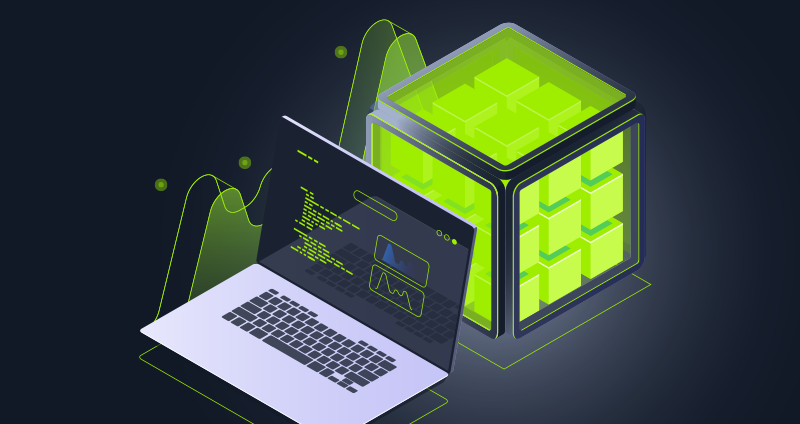
Helpful skills for learning to read and write various programming languages and common weaknesses.
Hard
 225 Sections
225 Sections

 225 Sections
225 Sections
Required: 2100
Reward: +460

14 Modules included
Easy
 17 Sections
Reward: +10
17 Sections
Reward: +10
This module introduces the concept of Vulnerability Assessments. We will review the differences between vulnerability assessments and penetration tests, how to carry out a vulnerability assessment, how to interpret the assessment results, and how to deliver an effective vulnerability assessment report.
 17 Sections
17 Sections
Easy
 10 Sections
Reward: +10
10 Sections
Reward: +10
This module covers the basics needed for working with Bash scripts to automate tasks on Linux systems. A strong grasp of Bash is a fundamental skill for anyone working in a technical information security role. Through the power of automation, we can unlock the Linux operating system's full potential and efficiently perform habitual tasks.
 10 Sections
10 Sections
Easy
 14 Sections
Reward: +10
14 Sections
Reward: +10
Automating tedious or otherwise impossible tasks is highly valued during both penetration testing engagements and everyday life. Introduction to Python 3 aims to introduce the student to the world of scripting with Python 3 and covers the essential building blocks needed for a beginner to understand programming. Some advanced topics are also covered for the more experienced student. In a guided fashion and starting soft, the final goal of this module is to equip the reader with enough know-how to be able to implement simple yet useful pieces of software.
 14 Sections
14 Sections
Medium
 24 Sections
Reward: +20
24 Sections
Reward: +20
This module builds the core foundation for Binary Exploitation by teaching Computer Architecture and Assembly language basics.
 24 Sections
24 Sections
Medium
 13 Sections
Reward: +20
13 Sections
Reward: +20
Web services and APIs are frequently exposed to provide certain functionalities in a programmatic way between heterogeneous devices and software components. Both web services and APIs can assist in integrating different applications or facilitate separation within a given application. This module covers how to identify the functionality a web service or API offers and exploit any security-related inefficiencies.
 13 Sections
13 Sections
Medium
 12 Sections
Reward: +20
12 Sections
Reward: +20
Command injection vulnerabilities can be leveraged to compromise a hosting server and its entire network. This module will teach you how to identify and exploit command injection vulnerabilities and how to use various filter bypassing techniques to avoid security mitigations.
 12 Sections
12 Sections
Medium
 17 Sections
Reward: +10
17 Sections
Reward: +10
Databases are an important part of web application infrastructure and SQL (Structured Query Language) to store, retrieve, and manipulate information stored in them. SQL injection is a code injection technique used to take advantage of coding vulnerabilities and inject SQL queries via an application to bypass authentication, retrieve data from the back-end database, or achieve code execution on the underlying server.
 17 Sections
17 Sections
Medium
 33 Sections
Reward: +20
33 Sections
Reward: +20
Penetration Testers can come across various applications, such as Content Management Systems, custom web applications, internal portals used by developers and sysadmins, and more. It's common to find the same applications across many different environments. While an application may not be vulnerable in one environment, it may be misconfigured or unpatched in the next. It is important as an assessor to have a firm grasp of enumerating and attacking the common applications discussed in this module. This knowledge will help when encountering other types of applications during assessments.
 33 Sections
33 Sections
Easy
 21 Sections
Reward: +10
21 Sections
Reward: +10
Introduction to C# aims to provide a solid foundation to understand and work with C# code. Covering the crucial foundations and more intricate concepts, providing a comprehensive depth of knowledge in C#.
 21 Sections
21 Sections
Medium
 13 Sections
Reward: +10
13 Sections
Reward: +10
Buffer overflows are common vulnerabilities in software applications that can be exploited to achieve remote code execution (RCE) or perform a Denial-of-Service (DoS) attack. These vulnerabilities are caused by insecure coding, resulting in an attacker being able to overrun a program's buffer and overwrite adjacent memory locations, changing the program's execution path and resulting in unintended actions.
 13 Sections
13 Sections
Medium
 11 Sections
Reward: +10
11 Sections
Reward: +10
This module is your first step into Windows Binary Exploitation, and it will teach you how to exploit local and remote buffer overflow vulnerabilities on Windows machines.
 11 Sections
11 Sections
Easy
 11 Sections
Reward: +10
11 Sections
Reward: +10
This module will take you step-by-step through the fundamentals of JavaScript Deobfuscation until you can deobfuscate basic JavaScript code and understand its purpose.
 11 Sections
11 Sections
Hard
 17 Sections
Reward: +200
17 Sections
Reward: +200
Learn how to improve your JavaScript code's security through Code Review, Static/Dynamic Analysis, Vulnerability Identification, and Patching.
 17 Sections
17 Sections
Medium
 12 Sections
Reward: +100
12 Sections
Reward: +100
This module serves as an introduction to fundamental Game Hacking concepts. You will learn how to find and change memory values in a running game as well as explore other tools and techniques.
 12 Sections
12 Sections